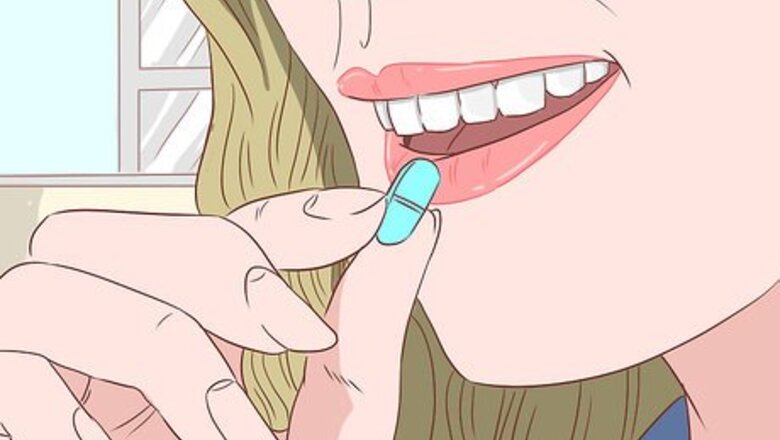
views
X
Research source
These muscles along with your back muscles make up your "core." Most injuries to the oblique muscles are caused by tension from excessive repetition of movements or forceful, strained movement. Pulled or strained oblique muscles can be both painful and disruptive to your ability to function regularly, and can take upwards of four to six weeks to fully heal. Because these muscles are so heavily used in the day-to-day functions of the body, it's important to begin treating a pulled oblique muscle as soon as possible. Learning how to treat a pulled oblique muscle can help you speed up the recovery process and get back on your feet.
Treating the Injury at Home
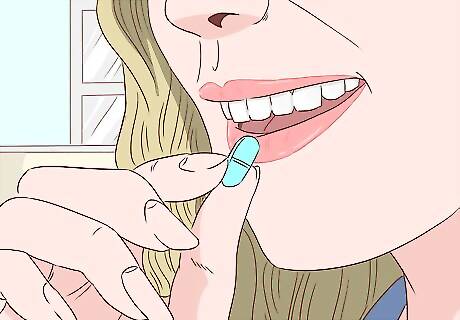
Take pain medicine. A pulled muscle can take several weeks to heal, and in the meantime can cause considerable pain. One of the best ways to alleviate that pain at home is by taking non-steroidal anti-inflammatory drugs (NSAIDs), such as ibuprofen. NSAIDs like aspirin and ibuprofen can help reduce pain and inflammation. Reducing inflammation is important for core muscles like obliques, which are crucial for movement.

Apply ice for the first 48 hours. Ice is helpful for muscle pain, as the cold compress slows down blood flow and reduce swelling and inflammation. If you do not have an ice pack, you can wrap ice cubes in a clean dish towel or use a cold, flexible item like frozen vegetables from the freezer. Ice should be applied for no more than 20 minutes, then removed for at least 20 minutes before being reapplied. Remove the ice pack if the skin turns red or bright pink. Do not apply ice directly to the skin, as this may cause ice burns. Ice works best for the first 48 hours after an injury. After 48 hours, switch to heat treatment or alternate between heat and ice.
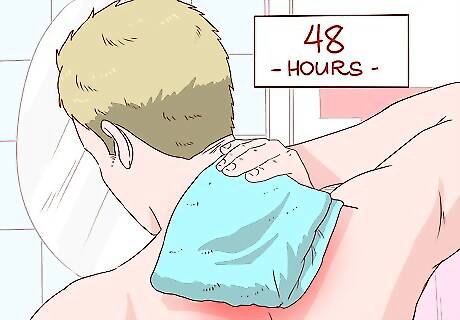
Apply heat after 48 hours. Icing an injury is best during the first 48 hours, as it reduces swelling and inflammation. After 48 hours, you can also use heat treatment, such as a heating pad. Heat will help to relax your muscles and re-stimulate blood flow, allowing the tissue to heal. Moist heat sources, such as a hot water bottle or hot water bath, may penetrate to the muscle better than dry heat sources. Do not apply heat for longer than 20 minutes at a time unless your doctor or physical therapist has instructed you to do so. If your skin becomes uncomfortable or hurts, remove the heat immediately. Never lie down on a heating pad, as you may fall asleep. Do not use a heat source if you will be sleeping, as the prolonged heat could cause severe burns. Do not apply heat sources directly to the skin, as the heat source may burn your skin. Always wrap heat sources in a clean dish towel before applying to the injury. Do not use heat sources if you have poor circulation or diabetes.
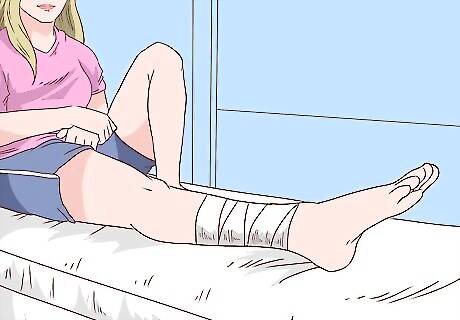
Rest the injury. The best thing for any injury is to let the muscles rest and recover. While the injury is healing, avoid any movements or activities that could further injure the oblique muscles. Skip your usual ab workouts until the muscles have healed and avoid movements that aggravate your oblique muscles.
Seeking Medical Care
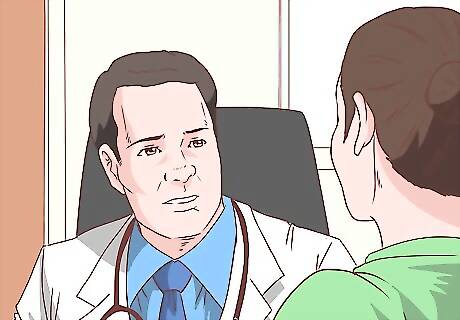
Know when to seek medical help. The oblique muscles can be quite painful when injured, and may take several weeks to heal. However, some injuries may take longer to heal than others, and may cause greater pain. Contact a medical professional immediately if any of the following occur: home care does not bring any relief whatsoever after 24 hours you hear a "popping" sound during movement you are incapable of walking or moving the injury has significant swelling or pain, or a fever accompanies any of your symptoms
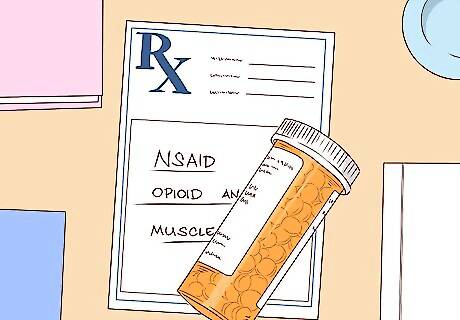
Take prescription medications. For severe injuries, your doctor may recommend a prescription-strength pain medication to help manage the pain. Always follow your doctor's instructions on taking prescription medications, and avoid driving or operating machinery while taking prescription pain medications. Common medications prescribed for injuries include prescription-strength NSAIDs, opioid analgesics, and muscle relaxers, although prescription-strength pain medication is typically reserved for severe, debilitating injuries.
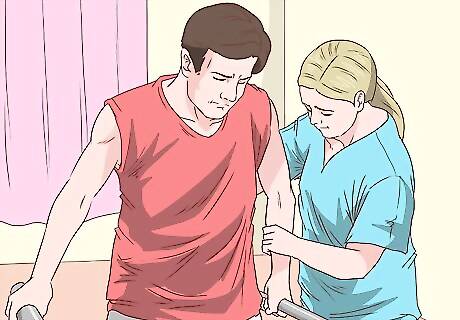
Consider a rehabilitation program. In cases of severe muscle injuries, some physical therapy or rehabilitation may be necessary. The oblique muscles are crucial for many types and ranges of movement, and they are often prone to repeat injuries. For some people, especially athletes who are at risk of re-injuring the obliques, rehabilitation sessions with a physical therapist will be recommended by a physician.
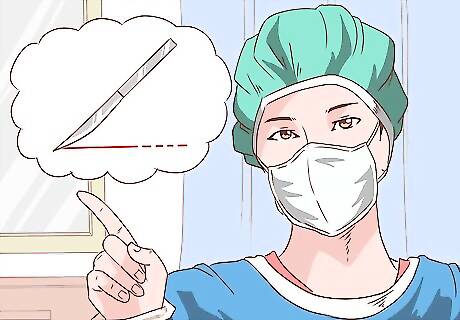
Talk to your doctor about surgery. Surgery is rarely recommended for pulled/strained muscles. However, severe muscle injuries, especially injuries in which the muscle is ruptured, may require surgery to ensure the injury heals properly.
Returning to Physical Activity
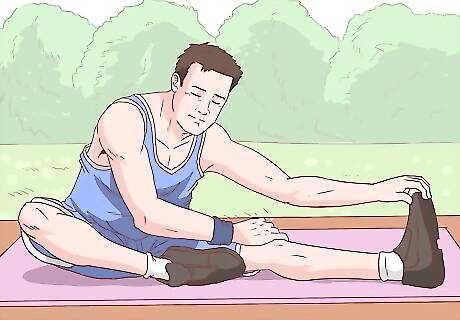
Strengthen and condition your muscles. Before you can resume your previous levels of physical activity after a lengthy injury, you'll need to regain your strength. It's important to develop a strength-training regimen, either on your own or by coordinating with a physical therapist. Always stretch before engaging in sports or any kind of physical activity. Never stretch to the point of pain, and continue rehabilitative therapy as needed.
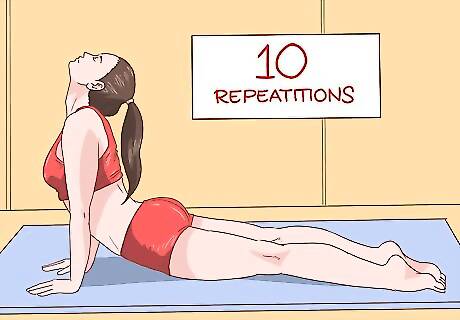
Do upward-facing dog stretches. These stretches work the rectus abdominis, the group of muscles closest to the obliques. Strengthening the rectus abdominis should be a part of your comprehensive oblique rehab plan. While lying flat against the ground facing downward, position your hands directly beneath your shoulders. Keep your feet hip-width apart, your gluteal muscles squeezed, and your spine and neck held straight and level. While keeping your lower body flat against the ground, slowly straighten your arms to raise your upper body. Hold this pose for five seconds, then return to the floor. Complete 10 repetitions, as long as the stretch doesn't cause any pain.
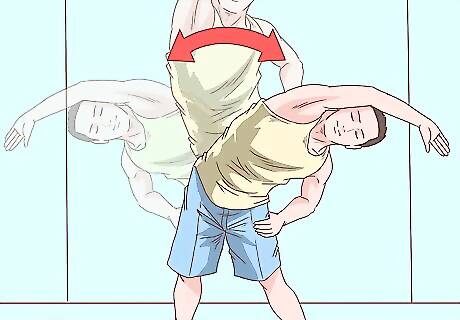
Practice standing stretches. Standing stretches are another excellent routine to help strengthen the rectus abdominis. When practiced in conjunction with upward-facing dog and other rehabilitative techniques, standing stretches can help return your normal range of motion after an injury. Stand straight upright with your feet shoulder-width apart. Keep your back straight, and raise your hands over your head. Slowly and gently lean to one side until you begin to feel some stretch through your abdomen. Hold that position for five seconds, then switch to the other side. Complete ten repetitions on each side, as long as the stretch does not cause you any pain.



















Comments
0 comment